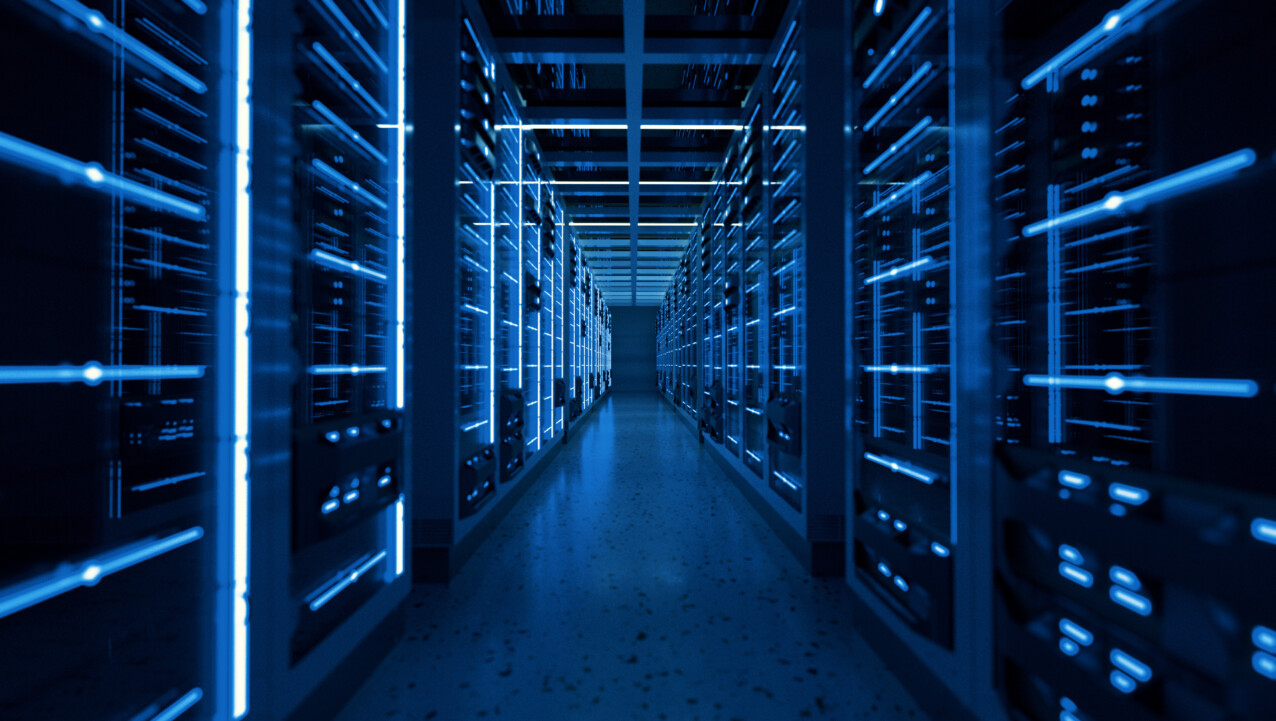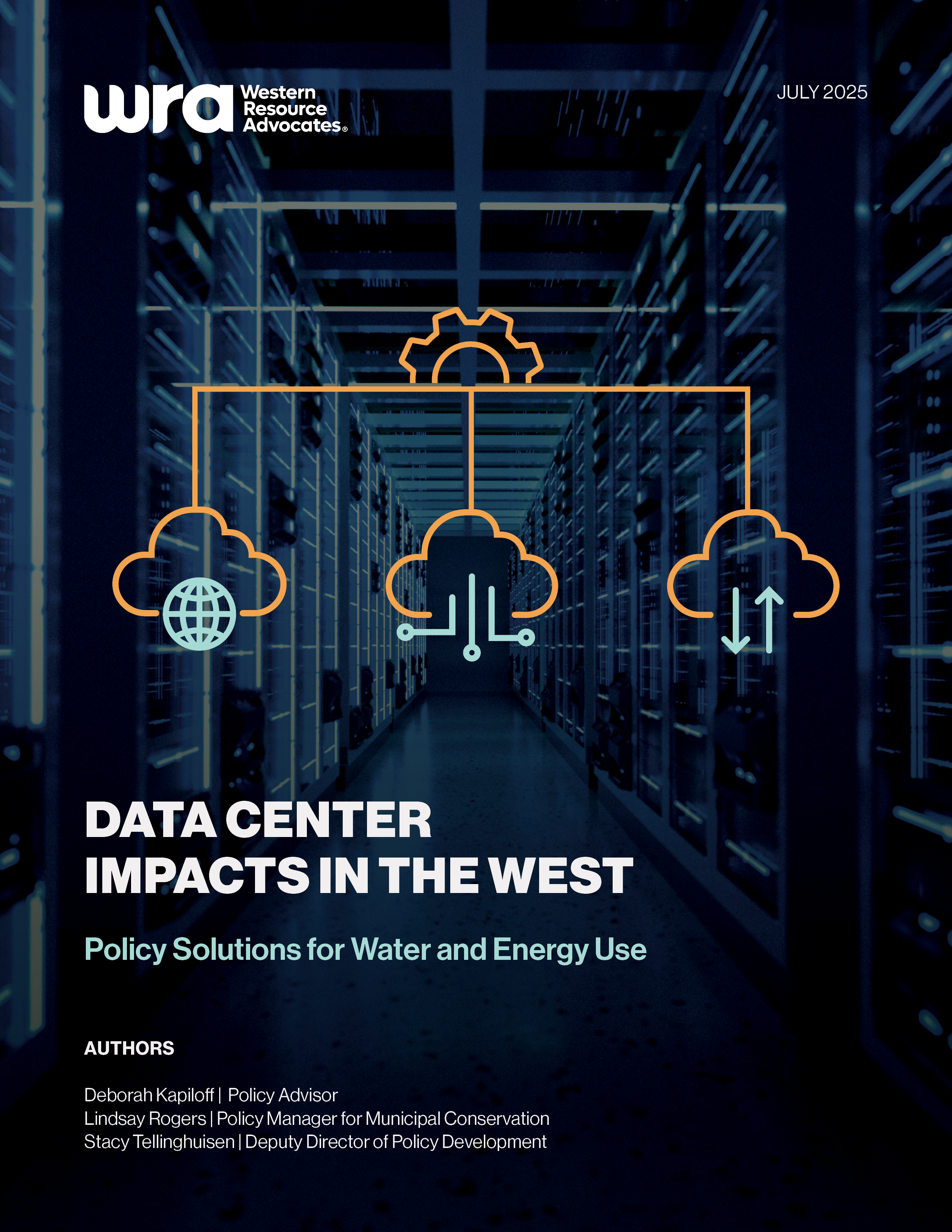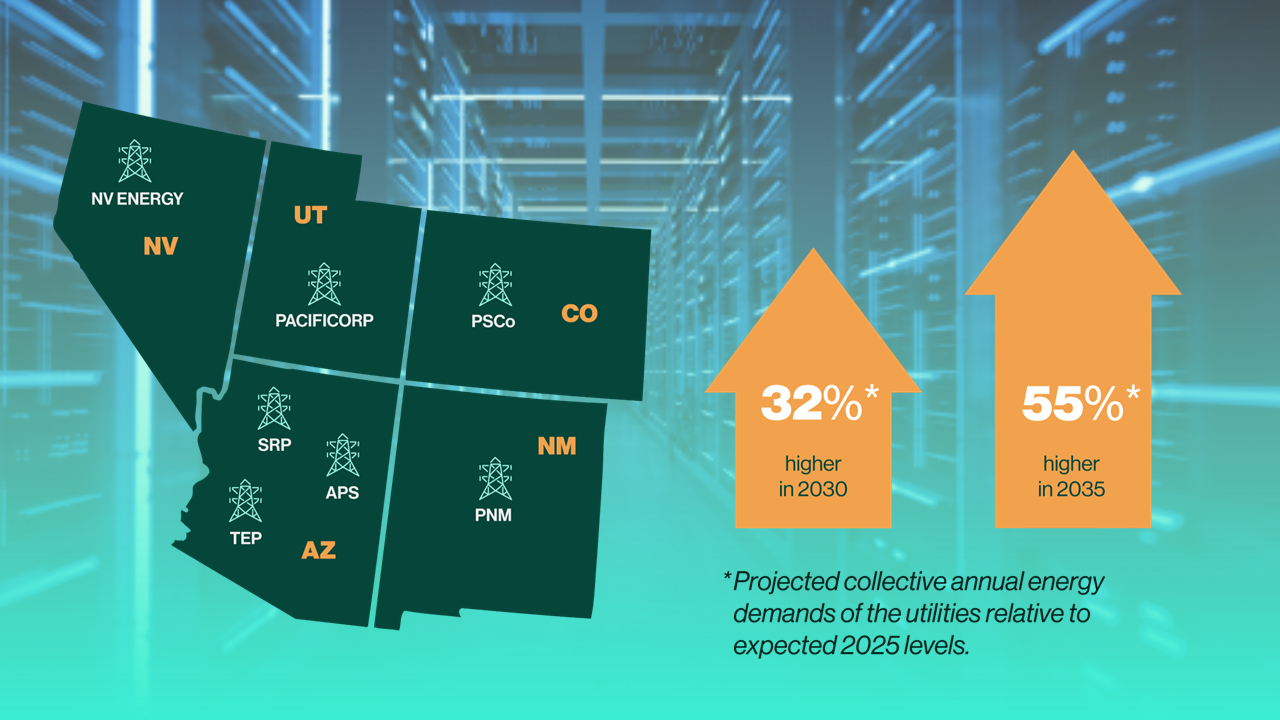July 21, 2025
Policy Solutions for Mitigating Data Center Growth
In less than two years, artificial intelligence has moved at light speed from the pages of science fiction to a ubiquitous reality. Platforms like ChatGPT can churn out near-instantaneous answers to almost any question; AI synopses from multiple sources now appear at the top of every Google search result; and visual art, video, and even music can be created without cost and in seconds by AI with just a few written prompts.
Powering these applications are data centers – buildings all over the world housing humming rows of servers that bring AI, cloud computing, and high-speed internet to our smartphones and laptops. But all this computing power comes at a high cost.
Over just the past few years, seven of the eight largest utilities in the Interior West — where WRA works to transition the power sector to clean energy — have seen collective load forecasts, or projected future demands for energy, increase significantly. This is largely due to the exponential growth in electricity demand from data centers. The region’s utilities are collectively forecasting a staggering increase in energy demand of more than 50% in the next decade alone. The growth projected in just the next five years surpasses current output capacities that took even the largest utilities a century or more to build.
Data centers require more than massive amounts of energy – most have vast cooling needs to protect the computer hardware contained within. If the projections of data center load growth from the region’s utilities become reality, new data centers in Arizona, Colorado, Nevada, New Mexico, and Utah could have annual water use of 13,700 acre-feet in 2030, and 21,600 acre-feet in 2035. In the arid Interior West, where water supplies are already scarce and becoming more so, this level of increased demand poses unique risks and challenges.
How much water is that?
21,600 acre-feet is enough water to support approximately 200,000 people.
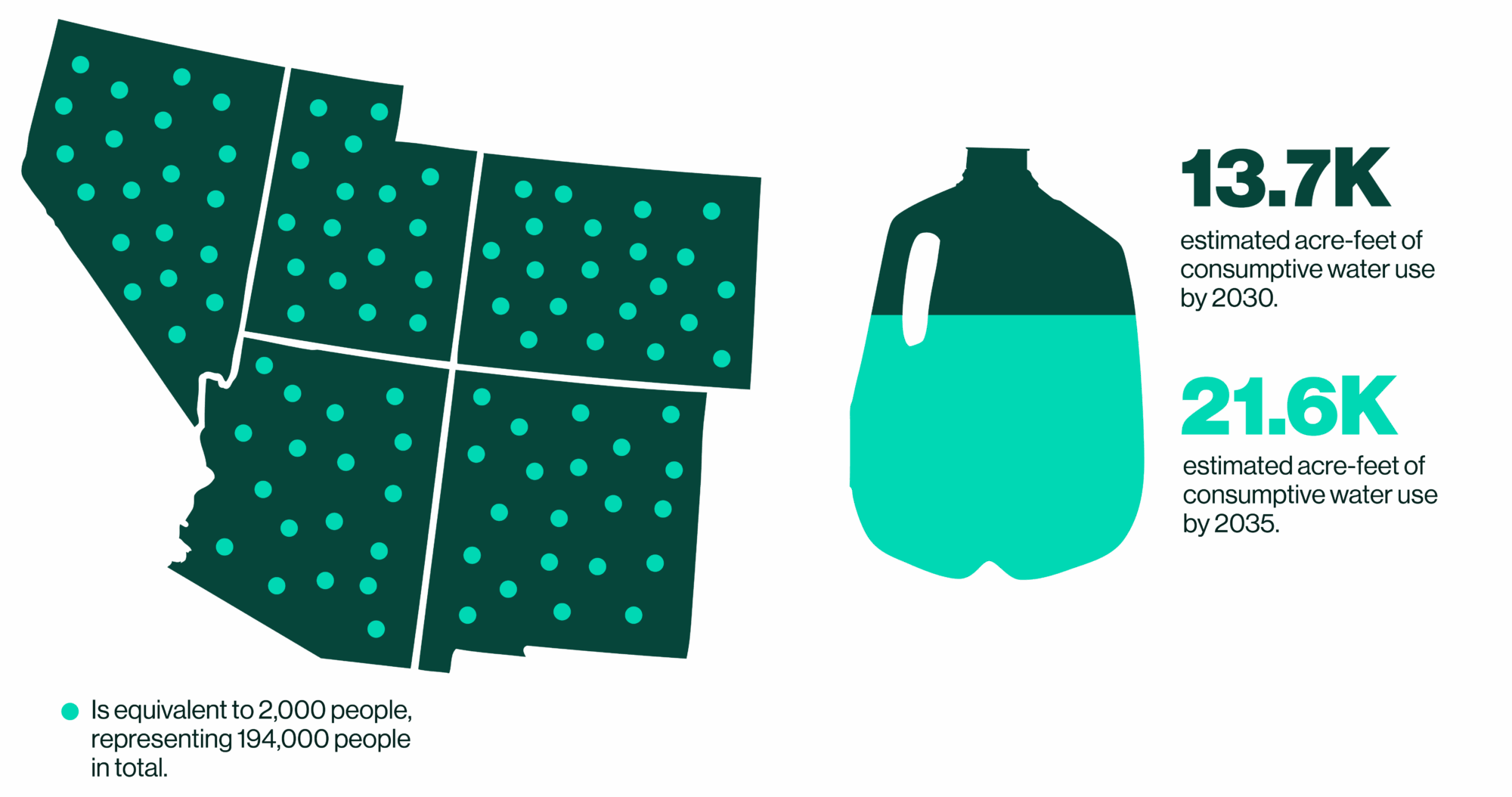
Without the guidance of reasonable policies, AI, and the data centers that power it, poses an imminent threat to meeting the climate and water conservation goals of Western states. But with the right policies in place, our region can rise to the challenges posed by data centers while simultaneously accelerating the transition to clean energy.
In WRA’s latest report, Data Center Impacts In the West: Policy Solutions for Energy and Water Use, we detail the load forecasts of the eight largest utilities in our region and give policy recommendations designed to inform decision makers, advance the transition to clean energy, protect scarce water resources, and protect the interests of electricity customers as we adapt to the sweeping change of AI.
The Data Center Boom in the West
For many across the Interior West, data centers are no longer an abstraction – the often-massive buildings are now being built close to neighborhoods.
For example, in Aurora, Colorado’s third-largest city, the 65-acre QTS Aurora-Denver 1 data center campus is located less than three miles east of Aurora’s Sports Park. It is expected to be one of Public Service Company of Colorado (Xcel Energy)’s largest customers, on par with the huge manufacturing and mining companies that held the title for decades.
QTS, which is owned by the private equity firm Blackstone, is also building QTS PHX 3, a massive 750-megawatt data center in Glendale, Arizona – the company’s third data center campus in the Phoenix metro area. When complete, PHX 3 will span 3 million square feet – nearly twice the size of State Farm Stadium, Arizona’s largest arena – and consume the same amount of energy as 120,000 homes.
Cities in our region are increasingly attractive to data center developers for an array of reasons, including a general lack of extreme weather events, readily available and relatively inexpensive land, and access to tech hubs. Some states like Arizona also have special incentives designed to entice developers with reduced electricity rates. Other regions, like the Salt Lake City metro area, are attracting massive data centers due to the area’s. For example, with $2 billion in fresh investment funding from JPMorgan Chase and Starwood Property Group, the Colorado Springs-based company Novva is building a 100-acre data center in West Jordan. When complete, Novva’s project will join the 29 data centers currently in operation within the Salt Lake City metropolitan area.
The Challenges of Unprecedented Load Growth
In WRA’s states, seven of the eight largest utilities – Xcel Energy, Public Service Company of New Mexico (PNM), NV Energy (NVE), PacifiCorp, Arizona Public Service (APS), Salt River Project (SRP), and Tucson Electric Power (TEP) – are seeing significant interconnection requests from new large loads, including data centers.
The collective annual energy demands of the utilities are projected to be 32% higher in 2030, and 55% higher in 2035, relative to expected 2025 levels. Over the 2025-2035 period, that equates to a compound annual growth rate of 4.5%. This forecast is significantly higher than the utilities’ forecasts made just a few years ago.
The collective regional change in demands masks more dramatic increases from certain utilities. For example, Xcel projects a nearly 50% increase in energy demand in 2030, and a 75% increase in 2035, as compared to its 2021 forecast for those years.
If these demands for new electricity are not met with clean energy resources like solar and wind, artificial intelligence technologies will increase greenhouse gas emissions from the power sector, making it nearly impossible to prevent the most catastrophic impacts of climate change.
NV Energy is a prime example. As of August 2023, the utility had 7,600 MW of requested capacity additions from “major projects” – largely data centers. To meet this amount of need by 2033, NV Energy would need to build the equivalent of 78.5% of its entire system again in the next 10 years. Most of the projected load growth in the state is located in northern Nevada. NV Energy predicts that by 2035 these major projects will use more energy than the entire residential population of the Las Vegas valley and surrounding communities.
To potentially accommodate this, NV Energy’s projected emissions in its 2024 Integrated Resource Plan jumped 53% from its 2022 estimates. This amounts to 3.2 million tons of additional greenhouse gas pollution, a change that will undermine NV Energy’s previous emissions reductions trajectory, resulting in a 10-year delay in reaching a previous level of emissions reductions.
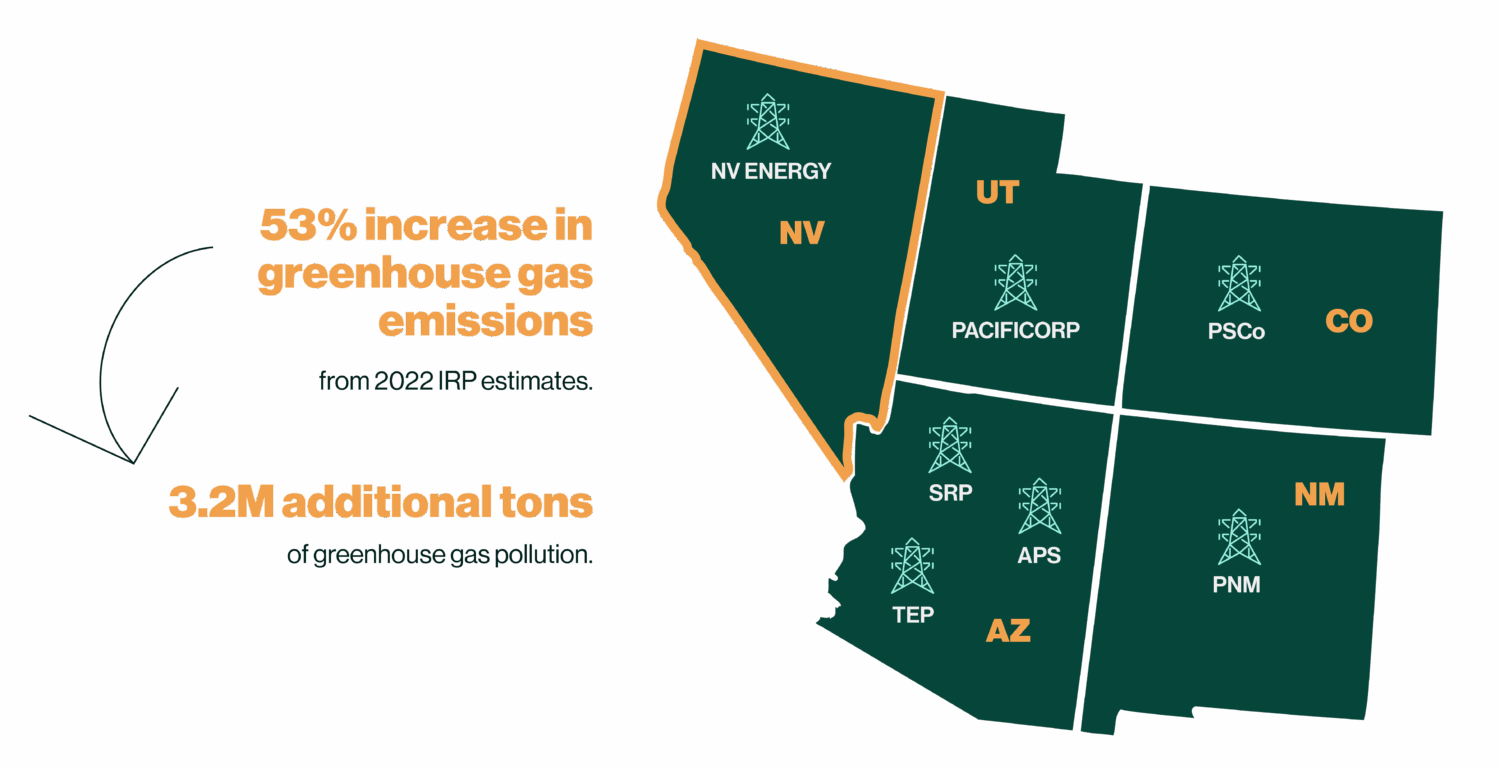
WRA’s Policy Recommendations
While data centers pose an emerging threat, they also represent an opportunity. Large companies driving the development of many data centers — Google, Meta, Amazon, and others — have expansive financial resources, and many have climate and clean energy goals. If these companies prioritize corporate responsibility and sustainability commitments, they could help accelerate the clean energy transition and minimize use of scarce water resources.
To address the emerging challenges and drive positive outcomes, WRA recommends that utilities, regulators, and elected leaders evaluate and adopt policies that advance clean energy, protect electricity customers, and minimize and mitigate impacts on water resources.
Advancing Clean Energy

Utilize Clean Energy Tariffs
An energy tariff outlines the terms, conditions, and price rates that allow utilities to supply energy to their customers. Under a clean transition tariff, a utility may develop new, clean resources like advanced geothermal on behalf of its data center customers, and the data centers would pay any incremental, additional cost of the clean resource.
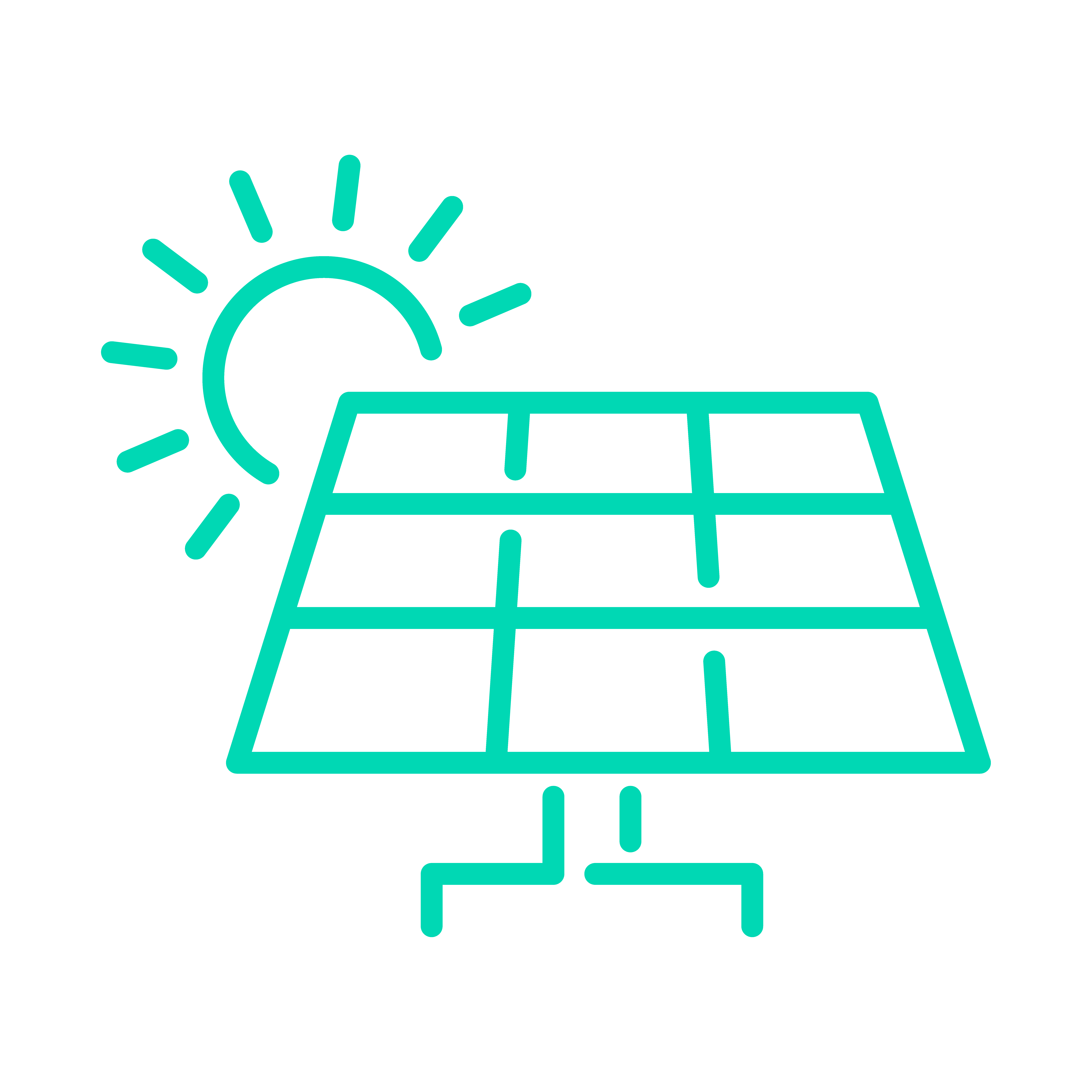
Enabling Behind-the-Meter Resources
With behind-the-meter resources — systems that enable customers to generate electricity on their own property — data center customers could develop, own, and operate energy resources directly. Such a program should, however, be limited to clean resources like solar, not gas or diesel generators, which would undermine states’ and utilities’ climate goals and degrade local air quality.
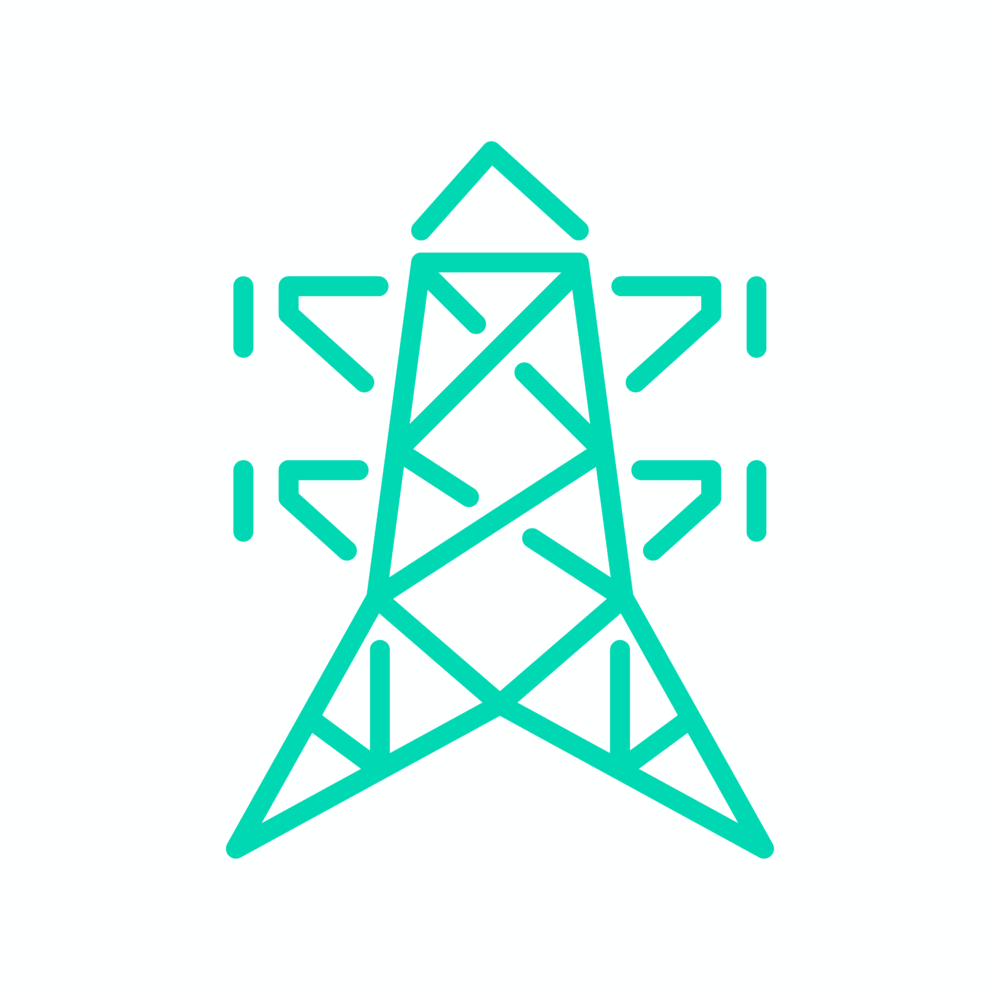
Encourage Load Shifting
During each day there are times when electricity demand spikes, like when many people return from work and begin to use their stoves, washing machines, and air conditioning units. To avoid additional strain to the grid, some data centers may be able to shift their electricity consumption away from times of peak electricity demand, thereby reducing costs and strain on the broader grid. Reducing data centers’ electricity consumption for a few select hours can reduce the overall impact of new load on a utility’s system and reduce utilities’ need to build resources, such as the polluting methane gas plants often used to supply energy during peak periods.
Preserving Scarce Water Resources

Require Water Reporting Requirements
Data centers can consume massive amounts of water and their impact can change dramatically based on location. And while water-efficient cooling systems are available for data centers, they often have higher energy demands. To better inform decision-making, state agencies should require data centers to report annually on both the cooling systems deployed and the annual water demands of their facilities to better plan for the potential impacts to water resources.

Require Water Efficiency, Reuse and Conservation
At a minimum, water used by data centers should not harm sensitive streams or habitat. If a data center’s projected water demands would require using local surface or groundwater resources, and use of that water could negatively impact valuable streams and habitats, the data center should be required to install water-efficient cooling systems. Data centers in our arid region should aim to minimize their water demands through efficiency measures and water reuse, and local jurisdictions should require data centers to offset their water use by investing in local water conservation programs.
Protecting Electricity Customers

Restructure Economic Development Rates
Economic development rates, meant to support economic growth, should only be available to data centers powered with clean energy and whose energy requirements support significant, permanent employment. These rates should only be available to data centers if the utility can demonstrate that the rates provide a clear benefit to other utility customers and do not shift costs between customer classes.

Improve Resource Planning and Acquisitions
Data centers and their huge electricity needs have injected uncertainty into utilities’ near- and long-term plans, straining their ability to accurately forecast future energy needs. If utilities unintentionally miscalculate future energy needs and overbuild transmission, generation, or distribution resources, residential and commercial customers could be left on the hook, forced to pay for those upgrades and additions that turned out to be unnecessary. To improve load forecasts, utility regulators should establish new best practices and requirements for utility load forecasting. Regulators should also consider revamping their Integrated Resource Planning processes to better accommodate the rapid and uncertain nature of data center growth.

Establish Contract Provisions
Load forecasts for data centers have inherent uncertainty. If a utility expands its transmission or generation system only to have large new loads not materialize, those investments may increase other costs for customers. To mitigate this risk, data center contracts should include multi-year minimum durations with early termination penalties, financial security assurances, and minimum billing provisions to ensure costs are borne by data center customers.

Follow Best Practices in Ratemaking
The magnitude of data center load may require updates to how utility commissions set rates and bills to ensure new large customers are paying their fair share. This could include creating a new rate class for these types of large customers. Regulatory processes must adapt to protect customers.
Data centers have emerged as an unexpected and unprecedented challenge to regulators, decision makers, and utilities’ traditional approaches to managing energy and water demands. With the right policies in place, however, the significant financial resources being poured into data centers can accelerate investments in clean energy resources and catalyze the development of new, innovative clean resources, such as long-duration storage, geothermal, or other clean resources that can meet data centers’ high loads while driving broader system transformation.
